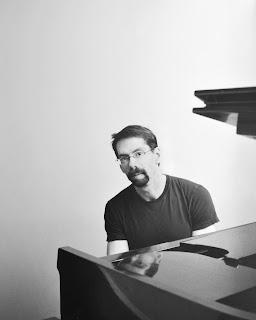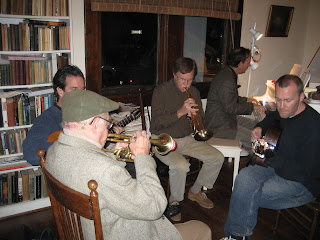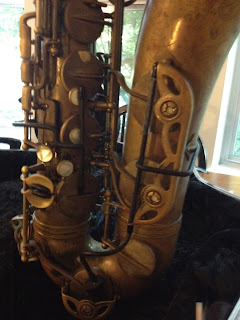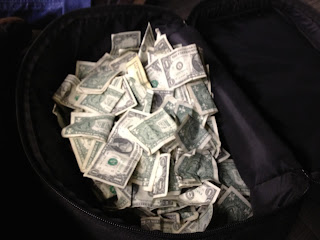Dizzy Gillespie on "On the Sunny Side of the Street"

Dizzy Gillespie ca. 1988 Previously I posted a transcription of Sonny Stitt's solo from the opening track of Sonny Side Up, "On the Sunny Side of the Street." Listening to this record when I was younger, I always paid more attention to the Sonnys' solos than to Dizzy's, so I thought I'd take some time to check out what Dizzy thought to play to differentiate himself from the two tenors. I've always thought that Dizzy's articulation of lines would be the most challenging aspect of transcribing him (particular faster lines in the upper register), but his lines sound very clearly at this moderate tempo. He places turns and embellishes in places that most saxophone players tend not to, and his phrasing is quite free and lays over the barline in ways that are worth checking out. Here's the solo: * * * * * It's been a pretty busy week: I've been working on a feature story for FM Magazine and had a couple rehearsals with an NEC st

.jpeg)





